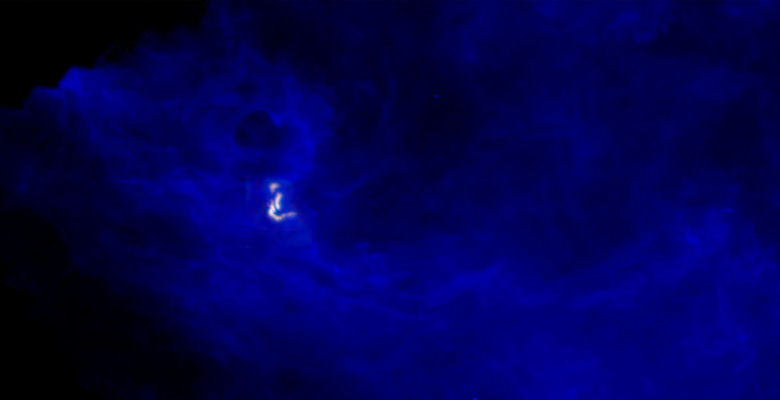Astronomers catch Tatooine multiple star system as it forms
For the first time astronomers, including Dr Richard Parker, of the Astrophysics Research Institute at LJMU, have caught a multiple-star system as it is created, and their observations are providing new insight into how such systems, and possibly the solar system, are formed. The amazing images taken from a series of telescopes on Earth show clouds of gas which are in the process of developing into stars.

Scientists from, LJMU, The University of Manchester and other institutes in Europe and around the world, looked at a cloud of gas some 800 light-years from Earth, homing in on a core of gas that contains one young protostar and three dense pockets of matter that they say will collapse into stars over the next 40,000 years. Of the eventual four stars, the astronomers predict that three may become a stable triple-star system. The findings are published in the journal Nature.
Dr Richard Parker, who performed the stability analysis calculations on the system, said: “Observing the formation and subsequent destruction of these systems will ultimately help us to understand whether our own Sun was once part of such a system and if it was, what happened to its stellar siblings.”
“That isn’t too far away from something that could be a real formation. In fact nearly half of all stars are in this type of system,” said Professor Gary Fuller, of the Jodrell Bank Centre for Astrophysics, The University of Manchester. “These kind of multi-star systems are quite common in the Universe. Think of Tatooine in Star Wars, where there are two ‘suns' in the sky.”
“Seeing such a multiple star system in its early stages of formation has been a longstanding challenge, but the combination of the Very Large Array (VLA) and the Green Bank Telescope (GBT) has given us the first look at such a young system.”
The scientists used the VLA and GBT, along with the James Clerk Maxwell Telescope (JCMT) in Hawaii, to study a dense core of gas called Barnard 5 (B5) in a region where young stars are forming in the constellation Perseus. This object was known to contain one young forming star.
When the research team used the VLA to map radio emission from ammonia molecules, they discovered that filaments of gas in B5 are fragmenting, and the fragments are beginning to contract to form additional stars ultimately becoming a multiple-star system.
Jaime Pineda, of the Institute for Astronomy, ETH Zurich, in Switzerland, who led the project, said: “We know that these stars eventually will form a multi-star system because our observations show that these gas condensations are gravitationally bound.
“This is the first time we've been able to show that such a young system is gravitationally bound.”
“This provides fantastic evidence that fragmentation of gas filaments is a process that can produce multiple-star systems," Dr Pineda said. Other proposed mechanisms include fragmentation of the main gas core, fragmentation within a disk of material orbiting a young star, and gravitational capture. “We've now convincingly added fragmentation of gas filaments to this list," Dr Pineda added.
The condensations in B5 that will produce stars now range from one-tenth to more than one-third the mass of the Sun, the scientists said. Their separations will range from 3,000 to 11,000 times the Earth-Sun distance.
The astronomers analysed the dynamics of the gas condensations and predict that, when they form into stars, they will form a stable system of an inner binary. The other two stars, they suggest, will be ejected from the system.
The story was covered by international press including the Mail Online and the Liverpool Echo
'The formation of a quadruple star system with wide separation ' is available on the Nature website.


